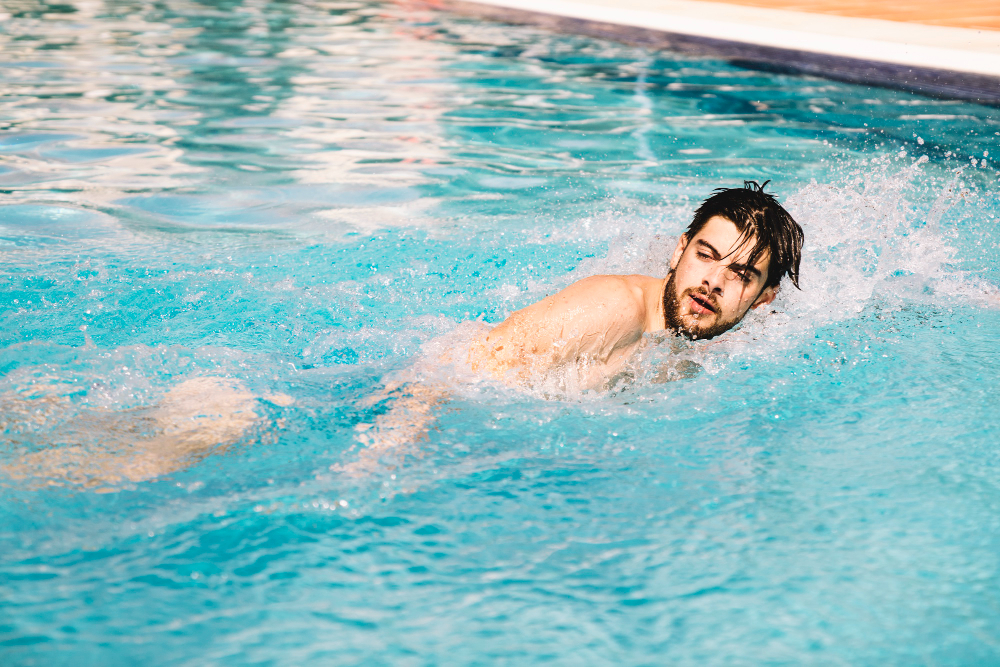Picture a busy swimming pool on a bright afternoon. Children are laughing, splashing, and learning how to float. Parents are cheering from the sides! Or maybe you are thinking of the beach. Waves crashing in the background with saltwater dripping from your hair as you dive in again and again.
Water days are some of the best days, but they are also the days your ears work the hardest without you even realising it!
Every time water gets into your ears, it leaves a little footprint. Most times, it dries out and you move on. Sometimes, it lingers. When it does, it can quietly set off problems you may not notice until they grow into an ear problem.
If you love the water, or if your children are spending more time in pools and oceans, it is worth knowing what your ears go through and how you can protect them before small issues become serious ones.
Let us dive into this article that breaks down the basics of Swimmer’s ears and Surfer’s ears.
What is Swimmer's Ear?
Swimmer’s Ear is a common condition I often seen in people who spend a lot of time in the water. It is an infection of the outer ear canal, the part that connects the outside of your ear to the eardrum.
Usually, it happens when water gets trapped inside the ear after swimming or bathing.
When the skin inside stays damp for too long, it becomes softer and more vulnerable.
This gives bacteria or fungi a chance to grow and cause an infection.
Some of the early signs are easy to spot:
- You may feel pain when you touch your ear or gently pull on the earlobe.
- There can be a sense of fullness or blockage inside.
- Sometimes, the ear may itch deep inside or there may be a little fluid coming out.
It is important to know that Swimmer’s Ear is different from the kind of ear infection that comes with a cold. This infection affects the outer part of the ear and often feels sore on touch.
The good news is that if we catch it early, Swimmer’s Ear is simple to treat. With the right ear drops and by keeping the ear dry, most people recover quickly.
If left alone for too long, though, it can become more painful and may even spread.
That is why it is always better to have it checked if you notice any discomfort after water activities.
Simple habits like drying your ears carefully and avoiding cotton buds can go a long way in keeping your ears healthy.
How Is Surfer’s Ear Different From Swimmer’s Ear?
Unlike an infection, surfer’s ear is a slow, natural reaction that happens when the ear is exposed to cold water and wind over and over again.
To protect itself, the ear gradually starts forming extra bone inside the ear canal. This slow build-up is called exostosis. It is the body’s way of trying to shield the ear from irritation. Gradually, the extra bone can narrow the ear canal.
In the early stages, Surfer’s Ear is silent. There is no pain or obvious symptoms.
Many people do not realise anything is happening until water starts getting trapped more easily or they notice a feeling of blockage. Some people also find that their hearing feels different, especially after being in the water.
Surfer’s Ear is most often seen in surfers, divers, outdoor swimmers, and people who spend a lot of time in cold or windy water. But it can happen to anyone with enough repeated exposure.
When the bone growth becomes severe, it increases the risk of infections, blockages, and even gradual hearing loss. In such cases, a simple surgical procedure may be needed to remove the extra bone and open the canal again.
The best approach is early detection. A gentle examination by an ENT specialist can identify the early signs before they cause bigger problems.
Water Trapping and Temporary Hearing Changes
It is very common for a little water to stay inside the ear after swimming or bathing.
Most of the time, it drains out on its own without any trouble.
But when water remains trapped, it can cause a feeling of fullness, mild discomfort, or a slight change in hearing.
If the water stays for too long, it can also raise the chance of developing an infection.
There are a few simple ways you can help your ear clear the water:
- Tilt your head to one side and gently tug on the earlobe to encourage drainage.
- Use a soft towel to carefully dry the outer ear.
- A hairdryer set on the lowest setting, held at a safe distance, may help dry out the canal.
If these tips fail, you need to get your ears checked by an ENT specialist.
It is important to pay attention to how your ears feel after water activities. It is a small step that can make a big difference in protecting your ear health!
Did you know?
Babies who are teething often tug at their ears—not because of an ear infection, but because the pain radiates from their gums to the ears!
Enjoy the Water, but Protect Your Ears
Spending time in the water is one of life’s simple joys. It keeps the body active and the mind refreshed. Taking a few small steps to care for your ears can help make sure you enjoy it without worry!
After swimming or bathing, it helps to dry your ears gently.
Using protective earplugs in colder or windy conditions can also make a difference.
Most importantly, if you notice any signs like discomfort, fullness, or changes in hearing,
If you ever feel unsure or would like your ears examined, visit EarSurgeon Dr. Shree Rao! Sometimes, a simple check gives the reassurance you need to keep doing what you love with confidence.






